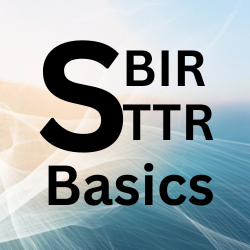When a company receives funding through the Small Business Innovation Research (SBIR) or Small Business Technology Transfer (STTR) programs, managing government-funded assets, along with the tools acquired under the grant, becomes crucial for long-term success. In many cases, the company and the project funders contribute 50% to purchasing these assets, creating a unique financial and administrative landscape that requires careful attention. This article will explore the management of assets and tools acquired under these funding structures, ensuring compliance, accountability, and optimal utilization.
Understanding the SBIR and STTR Funding Model
Before diving into asset management, it is essential to understand the basics of SBIR and STTR grants. These programs support small businesses in researching and developing innovative technologies. SBIR fosters innovation in the private sector, while STTR encourages collaboration between small companies and research institutions.
In many cases, the program funds cover 50% of the project cost, with the company contributing the other 50%. This dual funding model often involves acquiring valuable assets or tools that will play a key role in the development and commercialization of the innovation. The company and the funder must navigate shared ownership, usage, and management of these assets.
Steps for Managing Government-funded Assets and Tools
1. Establish Clear Ownership and Usage Guidelines
The first step in managing assets acquired under an SBIR or STTR grant is defining ownership and usage rights. The company and the project funder each contribute 50% to the cost of these assets. Therefore, it is crucial to establish clear guidelines outlining permitted uses, requirements for sharing, and transfer eligibility.
- Document Ownership: Ensure the grant agreement clearly outlines ownership of assets, such as equipment, software, or intellectual property. The documentation should specify whether the company retains full ownership, shares ownership with the funder, or must license or lease the assets.
- Usage Restrictions: The grant terms may impose usage restrictions. For example, some assets may be limited to specific research purposes, while others may allow use for commercial purposes. Ensure the usage guidelines are well-defined to avoid conflicts or misunderstandings later.
2. Maintain Detailed Records of Acquisitions
Recordkeeping is essential when managing assets and tools acquired under an SBIR or STTR grant. Recordkeeping ensures that you meet compliance requirements and provides a transparent accounting trail for the company and the funding agency.
- Track Asset Purchases: Maintain an organized record of all assets purchased under the grant. Include purchase receipts, invoices, and other relevant documentation that show a 50/50 split between company and project funding.
- Create an Asset Inventory: Establish an asset inventory system that includes details such as the asset’s description, purchase price, location, and current status. An asset list facilitates monitoring the condition and usage of each item, ensuring compliance with the grant’s terms.
3. Develop a Usage and Maintenance Plan
Creating a usage and maintenance plan is essential for tools and equipment to remain in good condition and provide value throughout the project. This plan should outline asset maintenance, identify who is responsible for upkeep, and specify procedures for addressing any issues.
- Maintenance Schedule: Develop a maintenance schedule for any physical equipment purchased under the grant. Regular checks and servicing can prevent costly repairs and ensure the asset’s longevity.
- Responsible Parties: Clearly define which team members are responsible for maintaining and operating each asset. Assigning specific individuals or departments to handle this responsibility ensures accountability and minimizes the risk of neglect.
4. Monitor and Report Usage and Progress
The company and funding agency monitor asset and tool use throughout the project’s life. Regular reporting ensures compliance with the terms of the SBIR or STTR grant and demonstrates progress toward achieving project milestones.
- Progress Reports: Prepare periodic reports that track asset usage and their contribution to project milestones. These reports should be submitted to the funding agency, highlighting the impact of the tools on research outcomes or technological development.
- Performance Metrics: Use performance metrics to assess the effectiveness of the assets. These could include the number of tests completed using specific tools, the amount of data collected, or the efficiency improvements seen in the project due to using particular equipment.
5. Plan for Government-funded Assets Disposal or Transfer
After the SBIR or STTR project, government-funded assets may need to be disposed of, transferred, or repurposed. The grant terms should outline how this process will unfold, and a proper plan should be in place to manage the disposal or transfer of assets.
- Disposal Guidelines: If the company plans to dispose of assets, ensure the process aligns with the grant’s stipulations. For example, the government may mandate the company to sell the equipment or transfer ownership to a research institution.
- Transfer of Ownership: If the asset has commercial value, the company may have the opportunity to negotiate with the funding agency or third parties regarding the transfer of ownership or sale.
Tips for Compliance and Avoiding Pitfalls
- Understand the Grant Terms: Each SBIR or STTR grant may have specific terms that affect asset management. Ensure that you thoroughly understand the funding agreement to avoid potential violations.
- Communicate with Funding Agencies: Establish open communication with the funding agency. They can guide asset management and ensure you’re adhering to all compliance regulations.
- Separate Financial Records: When tracking asset purchases, keep company funds and grant funds separate. Segregation of funds simplifies accounting and ensures you can provide an accurate breakdown when reporting to the funder.
- Prepare for Audits: Grant-funded projects are often subject to audits. Keep all records, reports, and documentation organized and up-to-date to ensure smooth audits and compliance with regulations.
Conclusion
Successfully managing assets and tools acquired under an SBIR or STTR grant requires careful planning, clear documentation, and diligent oversight. Establish clear ownership guidelines and maintain detailed records. Develop effective maintenance and usage plans. A robust plan ensures alignment between the company and the funding agency in using and preserving assets. With careful attention to these details, you can maximize the value of your SBIR or STTR investment and position your company for long-term success.
Following these strategies will enhance your project’s success and maintain compliance with government regulations, fostering a transparent and productive relationship with funding agencies.
Government-funded Equipment Citations and Resources
Here are some potential citations for the content based on the general concepts and requirements around managing assets and tools acquired through SBIR or STTR funding. Note that some of these references will need to be adapted depending on the exact resources you have available or are using.
- Small Business Administration (SBA). (n.d.). Small Business Innovation Research (SBIR) Program. Retrieved from https://www.sba.gov/funding-programs
- National Institutes of Health (NIH). (2022). STTR Program: Funding Opportunities. Retrieved from https://sbir.nih.gov
- Code of Federal Regulations (CFR). (2021). Title 48, Federal Acquisition Regulation (FAR). U.S. Government Publishing Office. Retrieved from https://www.ecfr.gov
- National Science Foundation (NSF). (2020). SBIR/STTR Phase I and Phase II Awards. Retrieved from https://www.nsf.gov
- Government Accountability Office (GAO). (2019). Federal Funding Accountability: Managing Assets Funded by SBIR and STTR Programs. GAO Report. Retrieved from https://www.gao.gov
- S. Department of Energy (DOE). (2021). SBIR/STTR Program Guidelines. Retrieved from https://science.osti.gov
- S. Department of Defense (DoD). (2021). SBIR/STTR Program and Asset Management Guidelines. Retrieved from https://www.defense.gov
- S. Department of Commerce. (2019). Managing Government-Funded Assets and Tools. Retrieved from https://www.commerce.gov
It’s essential to refer to the official SBIR or STTR guidelines, funding agency documentation, and regulations governing asset management and compliance for specific and authoritative guidance. These documents often provide detailed instructions on handling funding, asset management, reporting, and audits.

